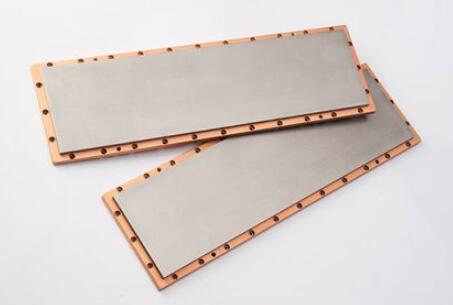Sputtering targets are an integral part of a variety of high-tech industries where their specific properties help form thin films on a variety of substrates. Different materials are selected based on the unique requirements of each application, such as conductivity, durability, and chemical stability. Here are some of the major industries where sputtering targets play a key role:
4.1 Semiconductor Manufacturing
In the semiconductor industry, sputtering plays a vital role in depositing thin metal and dielectric films on silicon wafers, which form the basic components of integrated circuits and other electronic devices. Materials like aluminum are often used in metal interconnect layers due to their excellent conductivity, making them ideal for forming electrical connections between components on a chip. In addition, titanium is often used as a barrier or adhesion layer between metal interconnects and silicon substrates, helping to prevent diffusion and ensure reliable electrical performance.
4.2 Data Storage (Hard Drive Manufacturing)
The data storage industry relies heavily on sputtering to produce thin films with magnetic properties that are necessary for storing digital information on hard drives and other magnetic storage devices. For example, cobalt is often used to deposit magnetic layers on hard drive platters, which makes high-density data storage possible. To improve corrosion resistance and increase coercivity, cobalt is sometimes alloyed with chromium to create a material that ensures long-term data stability and improves the performance of magnetic recording layers.

4.3 Optical Devices
Sputtering is widely used in the production of optical coatings, which are essential for improving the performance of lenses, mirrors, and other optical components by controlling reflectivity and transmittance. For example, silicon dioxide is a common material for anti-reflective coatings on optical lenses because it effectively reduces light reflections and improves clarity, which is essential for high-precision instruments such as microscopes and cameras. Another important material in this field is indium tin oxide, which is used to create transparent conductive films in touch screens and liquid crystal displays, combining conductivity with optical transparency to support the functionality of modern electronics.
4.4 Solar Cells
In the solar industry, rotary sputtering targets are widely used in the production of thin-film solar cells, where they help form the various layers required for efficient energy conversion. For example, aluminum-molybdenum alloys are used as back electrodes, providing excellent conductivity and strong adhesion to the substrate. The addition of molybdenum enhances the mechanical properties and corrosion resistance of this layer. Another widely used material in this field is copper indium gallium selenide (CIGS), a highly efficient absorber material in thin-film solar cells that is deposited onto the active layer by sputtering to efficiently convert sunlight into electricity.
4.5 Protective and Decorative Coatings
Sputtering is also commonly used to produce protective and decorative coatings on surfaces such as metals, glass, and ceramics. These coatings not only enhance the durability of the material, but also improve its aesthetics. For example, titanium nitride is often used as a gold-colored wear-resistant coating on items such as jewelry, watches, and high-end tools. Its attractive visual effect is matched by its excellent hardness and corrosion resistance. In addition, chromium is widely used to apply corrosion-resistant coatings on glass and metal surfaces (such as automotive parts and architectural glass) to protect them from environmental damage while maintaining a smooth, polished appearance.
Comments
Please Join Us to post.
0